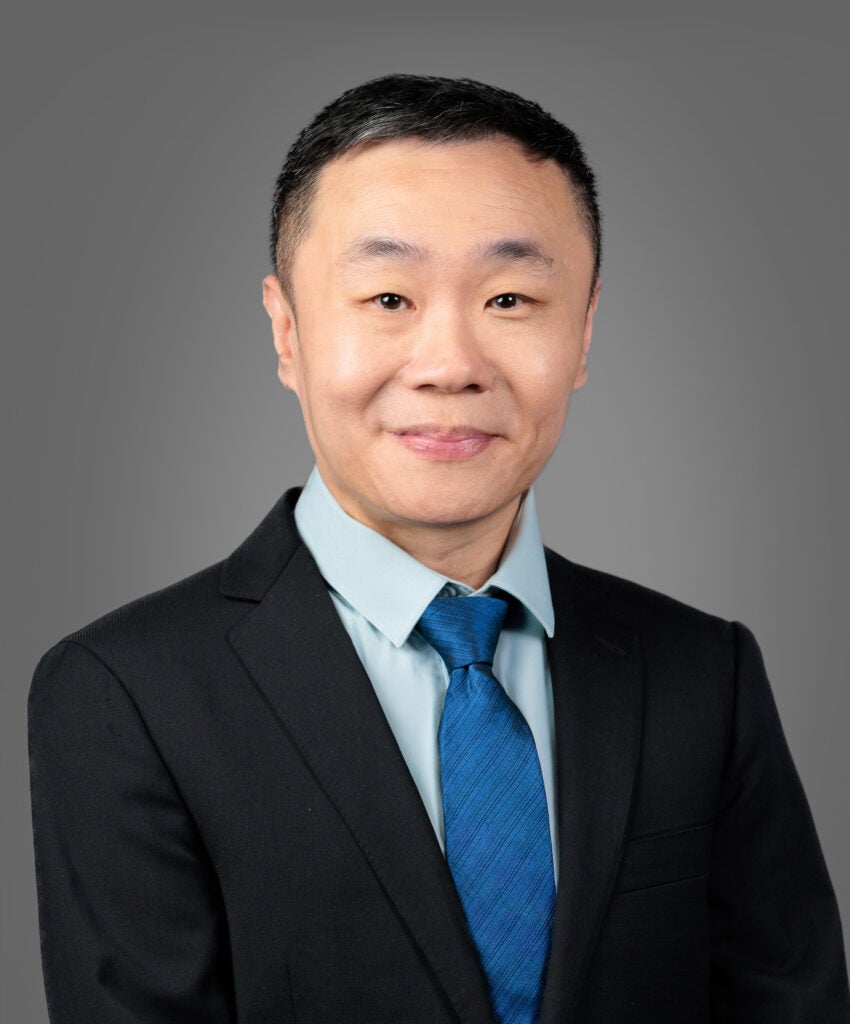Research Interests
Nature has created the most sophisticated and efficient solar energy conversion system in plants, algae, and a wide variety of photosynthetic bacteria. These photosynthetic organisms harvest sunlight and store the energy in chemical forms. Crucial to these processes are light harvesting antenna proteins which capture sunlight and transfer it to a reaction center (RC) where the primary process of charge separation begins. The excited electrons then go through an electron transport chain to make chemical compounds to power the organisms’ activities. The internal quantum yield of converting harvested light into the above mentioned electron transfer in these photosynthetic proteins is close to100%, Therefore the ability to understand how we could harvest the electrons produced during photosynthesis would help us to better design photovoltaic devices with higher conversion efficiency.
Our research group is focusing on both the fundamental principles and potential applications of photosynthetic organisms in the following areas:
- Photosynthetic RCs for photovoltaic and energy storage devices
- Photosynthetic proteins for hydrogen production
- To understand the dynamics of charge transfer within photosynthetic proteins photoelectrochemical cells by ultrafast spectroscopy.
- To use plasmonic effects to enhance light absorption ability of RCs’ cells
- Genetic modifications of photosynthetic proteins for enhanced light absorption (Through collaboration with our co-workers at the University of Bristol)
- Creating a nanoscale-scaffold to allow more proteins to be attached to electrode surfaces to enhance the performance of these types of proteins-based photoelectrochemical cells.
Selected Publications:
- Functionalizing Solar steam Generation towards Water and Energy Sustainability
K. Mao, Y. Zhang, S.C. Tan*. Nature Water (https://doi.org/10.1038/s44221-024-00363-x) - Hygroscopic Salt-embedded Composite Materials for Sorption-based Atmospheric Water Harvesting
H. Shan, P. Poredos, Z. Chen, X. Yang, Z. Ye, Z. Hu, R. Wang*, S.C. Tan*. Nature Review Materials, 2024, 9, 699. - Biomimetic spinning of functional soft fibers via spontaneous phase separation for wearable electronics
S. Zhang, Y. Zhou, A. Libanori, Y. Deng, M. Liu, M. Zhou, H. Qu, X. Zhao, P. Zheng, Y-L. Zhu*, J. Chen*, S.C. Tan*. Nature Electronics, 2023, 6, 338. - Best practices for solar water production technologies
Y. Zhang and S.C. Tan*. Nature Sustainability, 2022, 5, 554. - Microplastic Detection and Remediation through Efficient Interfacial Solar Evaporation for Immaculate Water Production
Z. Yu, Y. Li, Y. Zhang, P. Xu, C. Lv, W. Li, B. Maryam, X. Liu*, S.C. Tan*. Nature Communications, 2024, 15, 6081 - Scalable Multifunctional MOFs-textiles via Diazonium Chemistry
W. Li, Z. Yu, Y. Zhang, C. Lv, X. He, S. Wang, Z. Wang, B. He, S. Yuan, J. Xin, Y. Liu, T. Zhou, Z. Li*, S.C. Tan*, L. Wei*. Nature Communications, 2024, 15, 5297 - Ambient-conditions spinning of functional soft fibers via engineering molecular chain networks and phase separation
S. Zhang, M. Zhou, M. Liu, Z. Guo, H. Qu, W. Chen, S.C. Tan* Nature Communications, 2023, 14, 3245. - Shadow Enhanced Self-Charging Power System for Wave and Solar Energy Harvesting from the Ocean
Q. Zhang, Q. Liang, D. K. Nandakumar, H. Qu, Q. Shi, F. I. Alzakia1, D. J. J. Tay, L. Yang, X. Zhang, L. Suresh, C. Lee, A.T.S. Wee, S.C. Tan*. Nature Communications, 2021, 12, 616. - Photosynthetic apparatus of Rhodobacter sphaeroides exhibits prolonged charge storage
S. K. Ravi, P. Rawding, A. M. Elshahawy, K. Huang, W. Sun, F. Zhao, J. Wang, M. R. Jones, and S.C.Tan*. Nature Communications, 2019, 10, 902. - Optical manipulation of work function contrasts on metal thin films
S. K. Ravi, W. Sun, D. K. Nandakumar, Y. Zhang, S.C. Tan*. Science Advances, 2018, 4, eaao6050.


